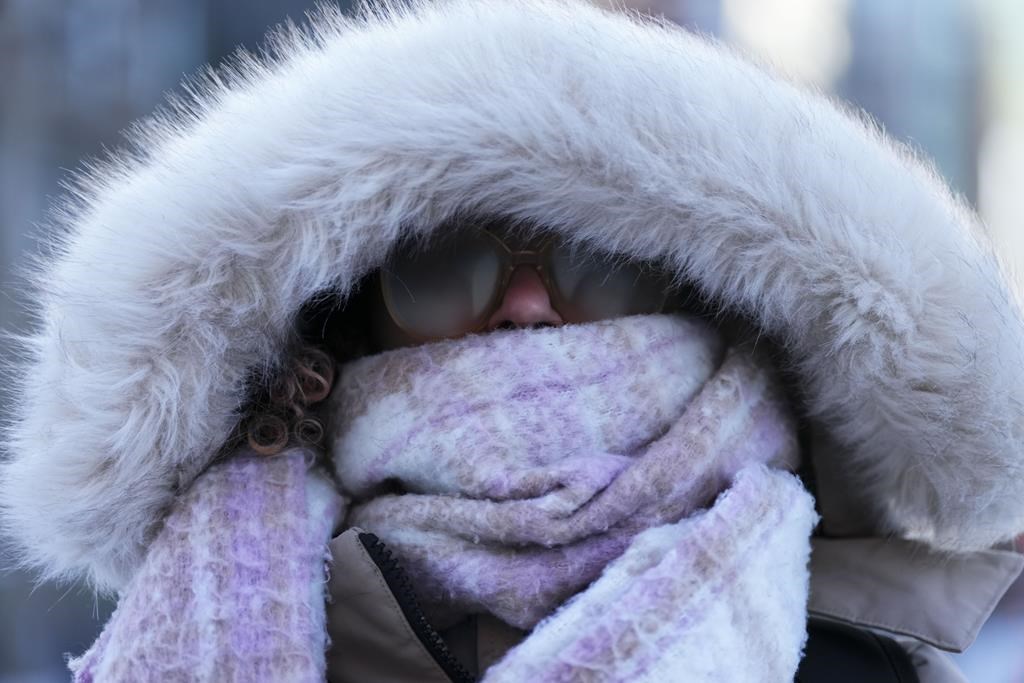TORONTO — Extreme cold gripped much of Ontario on Friday, prompting warnings from Environment Canada, while homeless advocates said warming centres in Toronto were at capacity during the frigid conditions.
Environment Canada warned of wind chill values between -30 C and -40 C across much of southern and eastern Ontario, and up to -50 C in parts of northern Ontario.
The federal weather agency said the cold could cause frostbite to develop on exposed skin within minutes.
Rafi Aaron, a Toronto-based spokesperson for the Interfaith Coalition to Fight Homelessness, said the city’s warming centres were full on Friday afternoon.
“There are so many people outside, it’s frightening,” he said. “I’ve been volunteering for 15 years in this sector, and I have never, ever seen this many people outside.”
Aaron said there are “close to 200” people seeking a bed in the city’s shelter system every night “at the best of times.”
“On a day like today, this is an emergency,” said Aaron, who is also a coordinator for the Out Of The Cold’s meal program. “We need something like the Red Cross to come in.”
The City of Toronto said on Friday it had directed workers in its emergency shelter system to not turn anyone away from shelters or warming centres during the extreme cold.
It said it has increased its warming centre capacity from 142 spaces to 195, while opening 237 temporary contingency spaces at various shelter sites.
“As always, the City’s top priority is supporting our most vulnerable residents,” the city said in a statement.
“The City is taking additional measures to help ensure the safety of those experiencing homelessness during this extreme winter weather.”
It said it has added 432 additional spaces to the shelter system, which were available on Thursday night.
“These spaces were in addition to the 9,000 shelter spaces currently offered at more than 100 shelters across the city,” it said.
The latest available City of Toronto data indicated its warming centres were at 98 per cent capacity on Thursday.
It said there was still space in its overnight shelter system as of Friday morning.
Lorraine Lam, an outreach worker at Regent Park Community Health Center in Toronto, said she spent Friday outdoors directing people to shelters and warming centres.
“A lot of the people that I’m supporting don’t have housing, and so are looking for warm places to go,” she said. “And with shelters being full and warming centres being full, people are finding respite wherever they can.”
Lam, who also works with the Shelter Housing Justice Network, said she encountered many people warming up in indoor public places such as fast-food restaurants and malls.
Dennis Cho, deputy medical officer at University Health Network, said UHN’s two emergency departments saw more people on Friday with cold-related injuries and also seeking shelter from the weather.
“We serve patients for all their different medical reasons, but there are also patients who present because there’s simply nowhere else to go,” said Cho.
Meteorologist Steven Flisfeder said the extreme cold conditions across the province were expected to continue into Saturday, with temperatures to plunge overnight Friday.
“We won’t see a real warm up until later in the day Saturday,” he said. “By the time we get to early next work week, we’ll have temperatures above seasonal once again.”
In addition to the extreme cold alerts, Environment Canada issued snow squall warnings for Grey-Bruce and Huron-Perth in southern Ontario, with snowfall up to 25 centimetres through Friday evening.
“Just grit our teeth, dress in layers, limit our time outdoors as much as possible and make sure we cover up as much skin as possible to protect from frostbite,” said Flisfeder.
The extreme cold snap led Environment Canada to issue similar cold warnings in Manitoba, through to Quebec and the Maritimes.
This report by The Canadian Press was first published Feb. 3, 2023.



